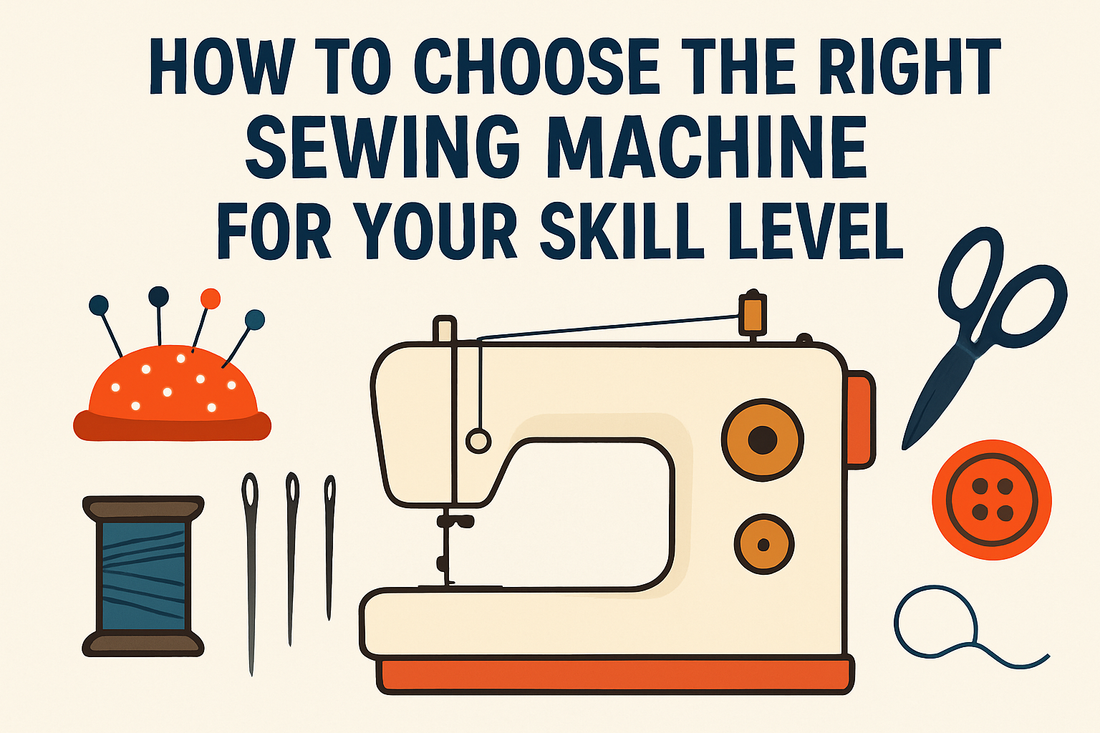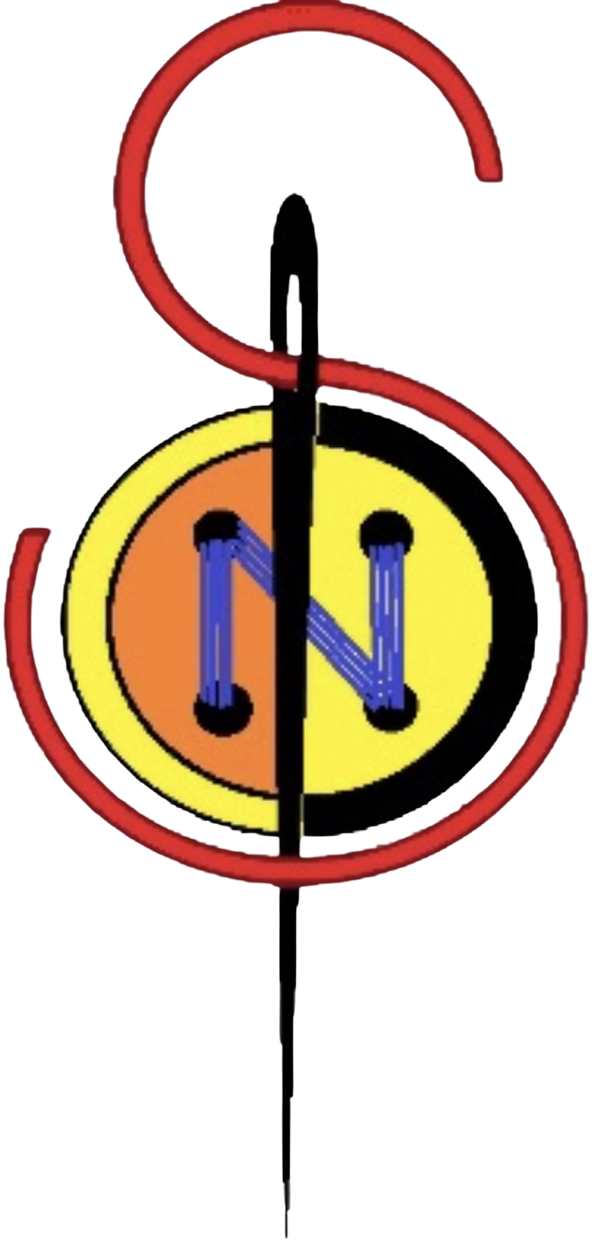
How to Choose the Right Sewing Machine for Your Skill Level
Share
Understanding Your Current Sewing Proficiency
Determining your sewing proficiency forms the cornerstone of selecting an appropriate machine. Novice sewists often underestimate the complexity differential between various mechanical configurations, while experienced artisans might overlook essential features that could amplify their creative potential.
Your skill assessment should encompass more than basic stitch execution. Consider your familiarity with tension adjustments, presser foot variations, and fabric handling techniques. Do you comprehend the nuances between woven and knit material requirements? Can you troubleshoot threading complications independently?
Beginner Characteristics and Requirements
Beginning sewists typically benefit from machines emphasizing simplicity and reliability over extensive functionality. Your primary focus should center on mastering fundamental techniques without overwhelming mechanical complexity interfering with the learning process.
Essential features for newcomers include automatic threading systems, pre-set stitch parameters, and intuitive control interfaces. One-step buttonhole mechanisms eliminate guesswork, while adjustable stitch length and zigzag width provide creative flexibility without demanding advanced technical knowledge.
Remember that mastering basic straight seams, curved stitching, and proper seam finishing techniques requires consistent practice regardless of machine sophistication.
Intermediate Sewist Considerations
Intermediate practitioners possess foundational competencies and seek expanded creative possibilities. Your machine selection should accommodate growing ambitions while maintaining user-friendly operation for complex projects.
At this proficiency level, decorative stitching capabilities, multiple presser foot compatibility, and enhanced speed control become valuable assets. You'll appreciate machines offering greater stitch variety, adjustable needle positions, and improved fabric feeding mechanisms for challenging materials.
Advanced and Professional Requirements
Seasoned sewists and professionals demand precision engineering, durability, and specialized functionality. Your machine must withstand intensive usage while delivering consistent, professional-quality results across diverse applications.
Advanced features include computerized stitch programming, embroidery capabilities, automatic tension adjustment, and heavy-duty construction for continuous operation. Professional-grade machines often incorporate industrial-strength components and specialized threading systems for maximum efficiency.
Essential Features by Skill Level
Machine features vary dramatically in complexity and utility depending on your expertise and intended applications. Understanding which capabilities align with your current proficiency prevents both under-purchasing and overwhelming yourself with unnecessary complexity.
Beginner-Friendly Features
Novice sewists should prioritize machines incorporating automatic threading, clearly marked control panels, and error-prevention mechanisms. Drop-in bobbin systems simplify threading procedures, while automatic needle threaders eliminate eye strain and threading frustration.
Speed control becomes particularly crucial for beginners. Variable speed settings allow gradual acceleration as confidence builds. Start/stop buttons provide alternatives to foot pedal operation, offering greater control during intricate maneuvering around curves or corners.
Pre-programmed stitch settings eliminate guesswork regarding tension, length, and width parameters. These automated configurations ensure consistent results while you develop tactile familiarity with fabric behavior and machine operation.
Intermediate Feature Priorities
Expanding sewists benefit from increased stitch repertoires, including decorative options, multiple buttonhole styles, and utility stitches for specialized applications. Adjustable presser foot pressure accommodates varying fabric weights without requiring manual modifications.
Free arm capabilities facilitate sleeve and cuff construction, while extension tables provide adequate workspace for larger projects. Needle position adjustment enables precise topstitching and edge finishing techniques.
Advanced Capabilities
Sophisticated machines offer computerized programming, memory functions for custom stitch combinations, and LCD displays providing visual guidance. Automatic cutting features, thread tension sensors, and advanced feeding systems enhance productivity and precision.
Professional applications often require specialized accessories, industrial-grade components, and compatibility with commercial-quality threads and notions.
Machine Types and Their Applications
Understanding fundamental machine categories helps narrow your selection based on intended usage patterns and project complexity. Each configuration offers distinct advantages suited to specific applications and skill levels.
Mechanical Sewing Machines
Mechanical machines rely on physical dials, levers, and manual adjustments for operation. These time-tested designs offer reliability, simplicity, and cost-effectiveness particularly appealing to beginning sewists.
Maintenance requirements remain minimal, while repair procedures stay relatively straightforward. Mechanical systems provide tactile feedback helping users develop intuitive understanding of fabric interaction and machine behavior.
However, stitch variety typically remains limited, and achieving consistent results requires greater operator skill compared to computerized alternatives.
Electronic and Computerized Models
Electronic machines incorporate digital controls while maintaining mechanical stitching mechanisms. Push-button selection, LCD displays, and automatic adjustments simplify operation while expanding creative possibilities.
Computerized variants offer extensive stitch libraries, programmable combinations, and memory storage for custom patterns. Advanced models include connectivity features, software compatibility, and upgrade capabilities.
These sophisticated systems excel for intermediate to advanced users seeking expanded functionality, though complexity may overwhelm absolute beginners.
Specialized Machine Categories
Serger machines create professional-quality seam finishes and stretch fabric construction. Coverstitch machines produce commercial-grade hems on knit garments. Embroidery machines enable decorative stitching and monogramming applications.
While specialized equipment enhances specific capabilities, most sewists benefit from mastering conventional machines before investing in dedicated applications.
Brand Analysis and Recommendations
Selecting appropriate brands involves evaluating build quality, customer support, parts availability, and feature alignment with your requirements. Established manufacturers offer varying strengths across different market segments.
| Brand | Beginner Suitability | Advanced Features | Price Range | Notable Strengths |
|---|---|---|---|---|
| Husqvarna Viking | Excellent | Superior | Mid to High | Innovation, Embroidery |
| Pfaff | Very Good | Excellent | Mid to High | Precision, Professional Quality |
| Singer | Excellent | Good | Low to Mid | Affordability, Reliability |
| Juki | Good | Superior | Mid to High | Industrial Heritage, Durability |
| Baby Lock | Very Good | Excellent | Mid to High | Serger Technology, Innovation |
Budget Considerations Across Skill Levels
Investment levels should align with your commitment, skill development trajectory, and project ambitions. Beginners often benefit from moderate investments allowing skill development without overwhelming financial commitment.
Entry-level machines ranging from $150-400 provide adequate functionality for learning fundamental techniques. Mid-range options ($400-1200) offer expanded capabilities supporting skill progression. Professional-grade equipment ($1200+) delivers commercial-quality performance for serious practitioners.
Common Selection Mistakes to Avoid
Understanding frequent purchasing errors prevents costly mistakes and ensures your chosen machine supports rather than hinders your sewing journey. These pitfalls occur across all skill levels.
Over-Purchasing for Current Needs
Beginners often purchase overly sophisticated machines anticipating rapid skill development. Complex features remain unused while basic functionality gets overlooked amid overwhelming options.
Focus on machines matching your current abilities with modest growth accommodation. You can always upgrade as skills and requirements evolve.
Under-Estimating Future Requirements
Conversely, purchasing machines lacking basic expandability limits growth potential. Ensure your selection includes fundamental features supporting skill development: adjustable stitch parameters, multiple presser feet compatibility, and adequate workspace.
Ignoring Support Infrastructure
Consider dealer proximity, service availability, and educational resources. Local support becomes invaluable for troubleshooting, maintenance, and skill development guidance.
Online retailers may offer competitive pricing, but local dealers provide hands-on experience, personalized guidance, and ongoing support relationships crucial for optimal machine utilization.
Testing and Evaluation Process
Hands-on evaluation provides insights impossible to obtain through specifications alone. Physical interaction reveals ergonomic compatibility, noise levels, and operational characteristics affecting daily usage satisfaction.
What to Test During Evaluation
Examine threading procedures, bobbin installation, and basic control accessibility. Test various stitch types using different fabric weights. Evaluate workspace adequacy, lighting conditions, and storage accessibility.
Pay attention to vibration levels, noise production, and overall operational smoothness. These factors significantly impact long-term usage satisfaction and workspace harmony.
- Threading system ease and clarity
- Control panel intuitive layout
- Stitch quality consistency across fabric types
- Workspace dimensions and accessibility
- Noise levels during operation
- Presser foot changing mechanisms
- Bobbin winding efficiency
- Overall build quality and stability
Questions to Ask Dealers
Knowledgeable dealers provide valuable insights beyond basic specifications. Inquire about maintenance requirements, warranty coverage, and upgrade pathways. Understanding long-term ownership costs helps make informed decisions.
Ask about included accessories, optional attachments, and compatibility with specialty feet or accessories. Some brands offer extensive accessory ecosystems supporting diverse applications.
Making Your Final Decision
Synthesizing your research, hands-on experience, and long-term goals guides optimal selection. Consider your primary applications, workspace constraints, and growth aspirations when finalizing your choice.
Remember that the ideal machine supports your creative vision while providing room for skill development. Whether you're embarking on your first quilting project or establishing a professional alteration business, choosing equipment aligned with your proficiency ensures years of satisfying creative expression.
Your investment in appropriate machinery pays dividends through enhanced project outcomes, reduced frustration, and accelerated skill development. Take time for thorough evaluation—the right machine becomes a trusted creative partner for years to come.
